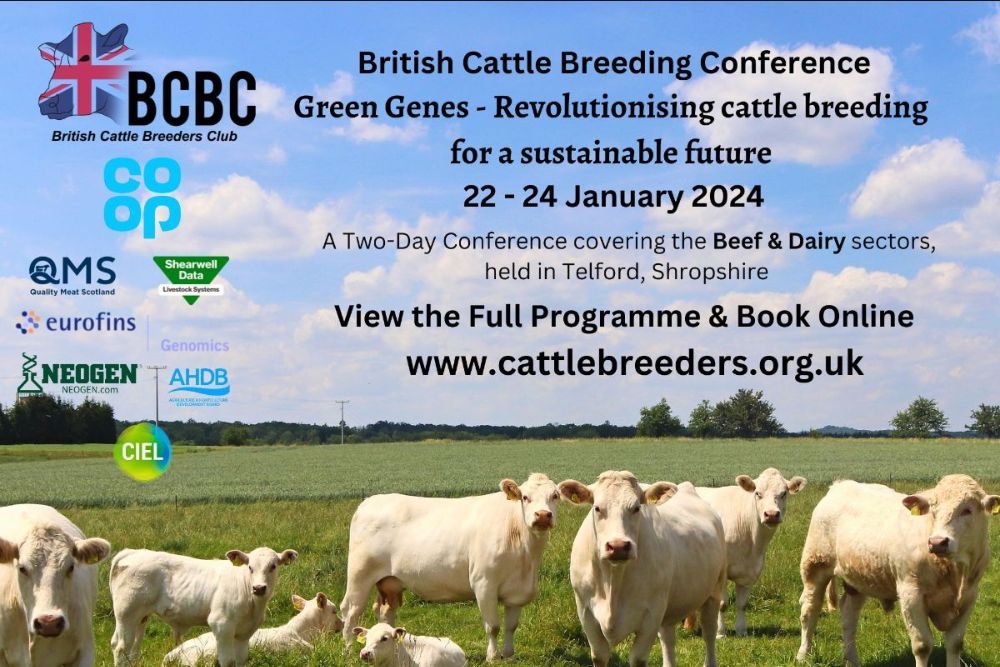Genetic trends in beef sires used on dairy cows
We estimate that, in 2023, over half of the prime beef animals finished in the UK had a dairy dam. This means that breeding decisions made by dairy farmers are having a huge impact on the beef industry. Below, we explore what this means in practice.
The beef sires chosen by a dairy farmer must be ‘easy calving’, but there is increasing interest in selecting these sires for other traits, which will increase the value of the dairy beef calf.
Our National Beef Evaluations use data from the British Cattle Movement Service (BCMS) and a national network of abattoirs to produce Estimated Breeding Values (EBVs) – a measure of the genetic merit – for five carcase and three maternal traits for all breeds and crossbreds.
They are grouped into native (most common breeds: Angus, Hereford and South Devon) and continental (most common breeds: Limousin, Simmental and British Blue) types to reflect the different genetic backgrounds.
To understand the changing selection in beef sires, we looked at the average EBV for dairy beef calves born between 2001–2021 and their sires. We can then compare this to the suckler beef calves over the same period.
Days to slaughter
Calves that finish more quickly cost less to rear, so breeding for a reduced days to slaughter is highly desirable for finishers.
These graphs shows that the average days to slaughter EBV for suckler beef calves and their sires (light and dark blue lines) have improved steadily over the last 20 years.
In the past, the genetic potential for days to slaughter of the dairy beef calves (green lines) was poorer than the suckler beef calves. However, since 2014, the improvement in suckler calves and sires is dwarfed by the massive improvements recorded in dairy beef.
Although, in the past, the genetic potential of dairy beef calves was poorer than their suckler-bred counterparts, this is no longer the case. This is due to the huge improvements in beef sires used on dairy cows.
If this trend continues, we expect dairy beef calves to have the genetic potential to finish more quickly than their suckler counterparts.
Carcase weight
For beef animals generally, a heavier carcase is desirable as payments are based on kilograms of the cold carcase weight.
For native sires, we do not see much change in calves from dairy herds between 2001–2016 (green line). This is quite different to the trend seen in the native sires and their calves in suckler systems (light and dark blue lines), where the genetic merit for carcase weight increased by 7.6 kg over the same period.
Since 2016, the average carcase weight EBV of native sires used in dairy herds (red line) has increased by 3 kg, although it remains lower than that of native sires used in suckler systems.
For continental sires, we see comparatively little change in both dairy and suckler performance. Before 2011, the average carcase EBVs for continental sires used in dairy herds (red line) were increasing. However, this rate of increase has slowed and there has been very little change since 2011.
A key aspect to this trait is its unfavourable correlation with birth weight and calving ease. Selecting a beef bull with a good calving ease will remain a top priority for dairy farmers; this will limit improvements in carcase weight. This is particularly clear in the trends for native sires, which are often used for their good calving.
These native sires used in dairy herds have a much lower rate of improvement for carcase weight than those used in suckler herds.
What is driving this selection?
Many dairy farmers make use of genetic tools, such as AHDB’s herd genetic reports, to help breed high-quality replacement heifers.
When it comes to the selection of beef sires, there is similar data available through artificial insemination (AI) companies, pedigree breed societies and our National Beef Evaluations. However dairy farmers have generally not been incentivised to breed beef calves with good carcase traits, so beyond calving ease, we don’t expect the average dairy farmer to be selecting beef sires according to their carcase EBVs.
However, these results show that genetic progress is still being made.
There may be several reasons for this, including the progress by pedigree farmers who breed these beef bulls, but also the prevalence of integrated systems, which enable collaboration between beef processors and AI companies. This ensures that the available beef sires will produce the type of calves that the finishers and processors need.
Key messages
Although the genetic merit for carcase traits of dairy beef calves was, in the past, poorer on average than suckler beef calves, this is no longer the case.
This is likely due to strong selection, particularly for reduced days to slaughter in the beef sires available from the large AI companies.
If you are buying dairy beef calves, you can use AHDB’s National Beef Evaluations to look up their sire to give an idea of their genetic potential.








